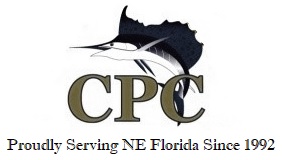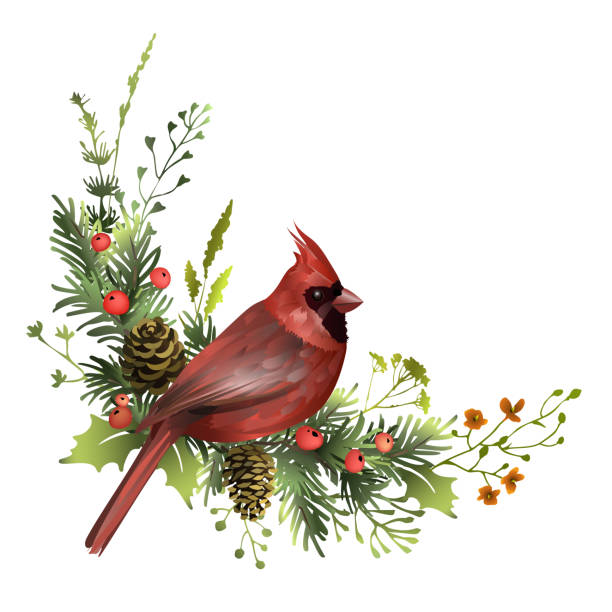CURTIS PEST CONTROL, INC.
1702 Lakeside Avenue, Suite 6 ▪ St. Augustine, FL 32084 ▪ (904) 827-1781
Weed Control, Pest Control & Fertilization for Residential & Commercial Turf
Quarterly Perimeter Pest Control for Residences

december 2025

LAWNS
Water your lawn 24 hours in advance of a predicted freeze. DON’T water your lawn when temperatures reach near freezing or if frost is evident. NEVER mow your lawn if you see frost. Keep your lawn leaf-free now – it will let in more sunlight, which also aids in reducing insects and preventing fungus. Outdoor roaches just love lawns covered in leaves – and guess where they want to go when temperatures drop?! Due to the grass being dormant and the fact that lower temperatures result in less water evaporation, St. Augustine grass requires much less water during the winter. If we are experiencing cooler temps and some rainfall, you may find you do not need to water at all, but if you do it should always be the same amount of water applied as during the growing season - 3/4" to 1" per zone. As we know, Florida is no stranger to experiencing its fair share of cold weather. Our lawns must begin the hardening off process before the arrival of cold weather, so refrain from applying fertilizer to maintain a tropical green appearance on your grass. Simply stated, north Florida lawns are NOT meant to be green all year. Your lawn should not require mowing nearly as often until springtime. In fact, you may not need to mow it at all. If you do, it should be done at the highest setting possible to protect the grass blades. If a frost causes the grass to brown and go into full dormancy, make one last cut and put the mower away for the winter. Again, make this last cut as high as your mower can be set , or better yet, just leave your lawn as is and do not mow. Leaving the grass blades longer through the winter provides a canopy that traps the heat near the soil, which allows the runners to stay warmer during the night. Keeping the runners and soil surface warmer for as long as possible each night makes any hard freezes less intense and helps minimize cold weather damage to your lawn. Lastly, if you are planning to prune any deciduous plants and trees, wait until the leaves are completely gone and the plant is dormant. Crape myrtles, apple and peach trees, roses and grapes all need annual pruning to increase flower and fruit production.
PETS
Holly, mistletoe and poinsettia plants are poisonous to dogs & cats. If you normally use these plants to decorate your home, they should always be kept in an area your pet cannot reach. Edible tree decorations, whether they be ornaments, or cranberry or popcorn strings, are like time bombs waiting to happen! These goodies are just too enticing and your pet will surely tug at them, knocking down your wonderfully decorated tree, or even worse, they could possibly mistake them as treats causing a serious intestinal blockage. Burning candles should be placed on high shelves or mantels, out of your pet's way -- there's no telling where a wagging tail may end up. Homes with fireplaces should use screens to avoid accidental burns . To prevent any accidental electrocutions , any exposed indoor or outdoor wires should be /secured taped to the side of your house. When gift wrapping, be sure to keep your pet away. Wrapping paper, string, plastic or cloth could cause intestinal blockages . Scissors are another hazard so they should be kept off floors or low tables.
HOME
When purchasing an artificial tree, look for the label "Fire Resistant." Although this label does not mean the tree won’t catch fire, it does indicate the tree will resist burning and should extinguish quickly. When purchasing a live tree, check for freshness. A fresh tree is green, needles are hard to pull from branches and when bent between your fingers, needles do not break . The trunk butt of a fresh tree is sticky with resin and when tapped on the ground the tree should not lose many needles. Putting lights on your tree or home exterior? Check each set of lights, new or old, for broken or cracked sockets, frayed or bare wires, or loose connections, and throw out damaged sets. Use no more than three standard-size sets of lights per single extension cord. Turn off all lights when you go to bed or leave the house. The lights could short out and start a fire. Have a fireplace? Do not burn wrapping papers in the fireplace. A flash fire may result as wrappings ignite suddenly and burn intensely.
From our families to yours, we wish you the merriest of holiday seasons!
